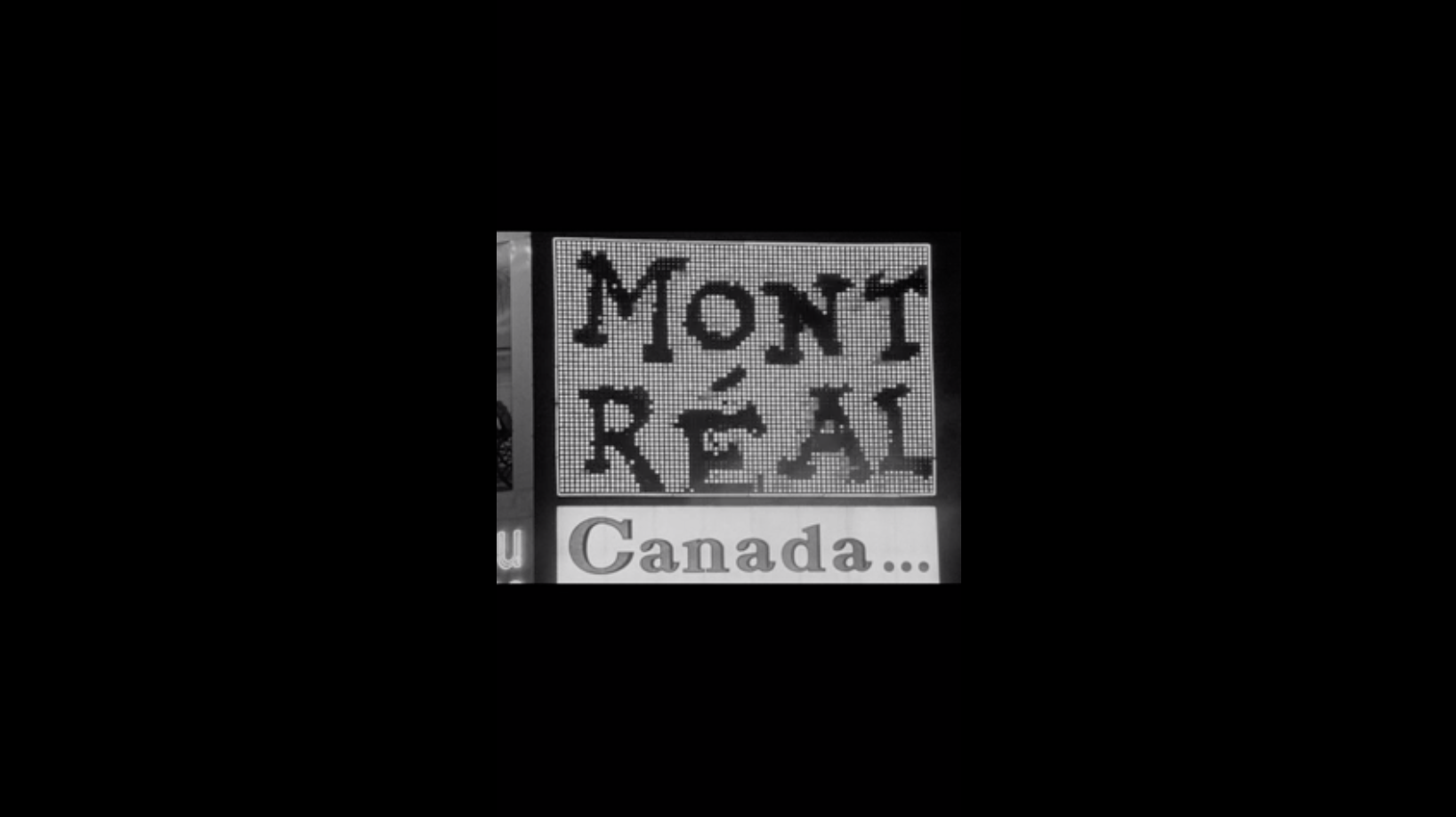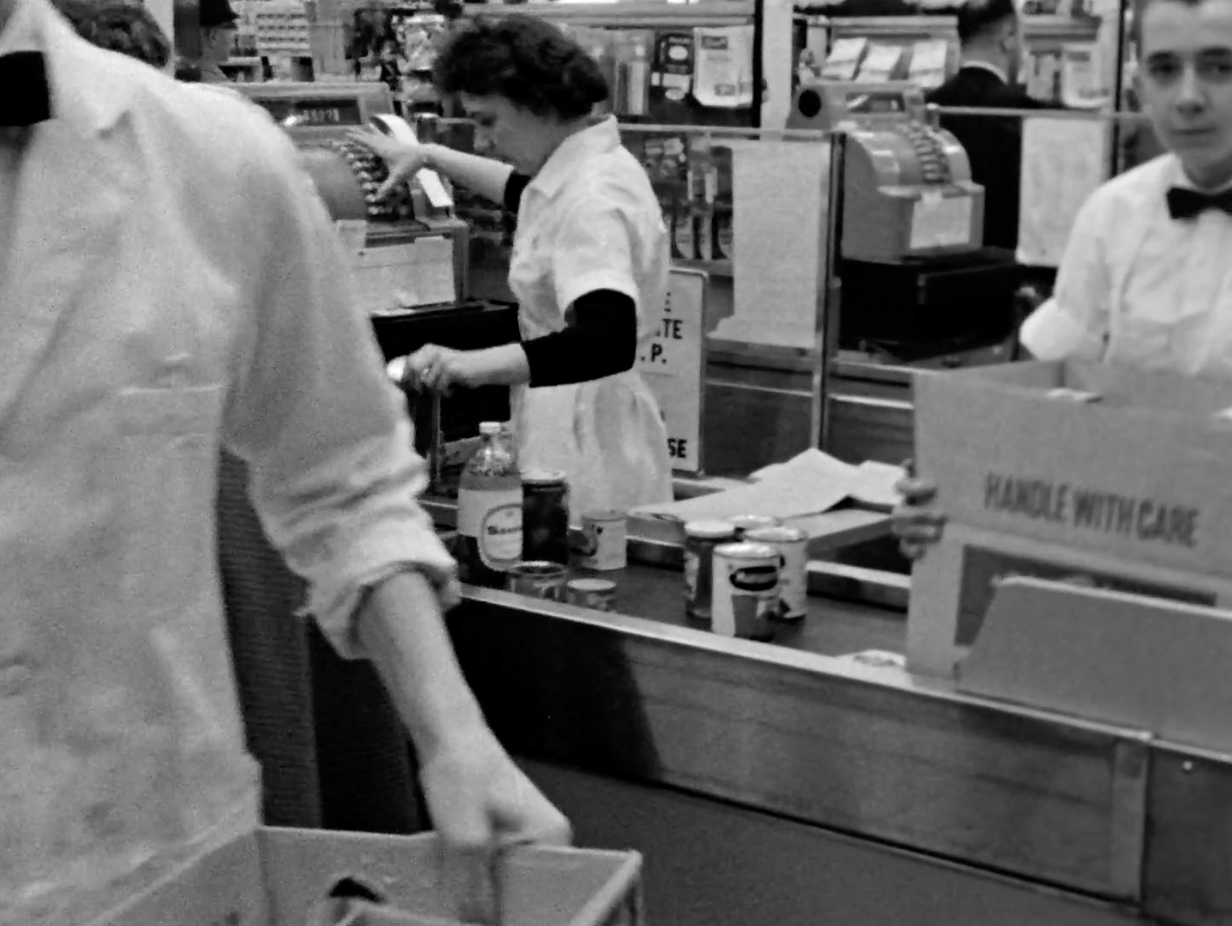New York Lightboard Record (1961), dir. McLaren
In 1961, the National Film Board of Canada received a commission to create a promotional film that would entice Americans to travel to Canada (and spend tourist dollars here). The project was a unique one. The Canadian Government Travel Bureau had secured access to a large electronic screen (a “lightboard”) overlooking Times Square in New York. They wanted a work of animation that would capture the attention of passersby and lure Americans to “visit Canada.” Not surprisingly, it was Norman McLaren, the NFB’s animation wizard and the founder of its animation program, who got the assignment. The result was a typically whimsical, ultra-creative, and highly entertaining short film based on the use of paper cutouts that came to be known as New York Lightboard.
Why should Americans visit Canada? How did the film make its pitch? Well, it did so by associating Canada with things like “fun,” and “play,” and “sun.” It used catchy rhymes to help capture some of Canada’s appeal: “East / West / North’s the Best.” And it hyped Canada’s festivals (the Montreal International Film Festival, the Stratford Shakespeare Festival, etc.), its events (the Calgary Stampede), and its great outdoors (forests! fish! canoeing! waterskiing!). Better yet, it presented this material in a playful, light-hearted, and even ironic manner. In other words, Canada came across as hip, not square—quite possibly for the first time in its history.
It was also slyly informative: Want more information? Call PLaza7-4917. (That’s PL7-4917.) Or visit Canada House, at 680 Fifth Avenue. Or write “Canada Travel, Ottawa.”
That same year, McLaren also made a film that documented the projection of his animated advertisement in Times Square, as well as the reactions of its denizens, visitors, and passersby. This film became known as New York Lightboard Record and it’s the one that you see featured in the images above.
What does any of this have to do with “Montreal as seen in its cinema, circa 1960-1975”? Well, this project was a literal extension of Montreal’s film culture, an intervention on the part of Montreal’s film culture, and a representation of Montreal’s film culture, in the nocturnal space of Times Square (it played from dusk till 1:00 a.m. every night for the length of its run). It was a peaceful and bloodless invasion (une invasion pacifique* [et électronique]) of the American consciousness on the part of Canada (or at least its Film Board).
This one’s obviously more than a little bittersweet, given the circumstances. The border has been largely closed for over a year now. The idea of enticing Americans to “visit Canada” in search of “play,” “fun,” “sun,” or anything else still seems distant at the moment.
[Norman McLaren; tourism; Canada; the Idea of North; Times Square; advertising; animation]
If you’d like to watch this film, you can find it here.
Opening Speech: McLaren (a.k.a. Norman McLaren’s Opening Speech) (1961)
1961 was also the year of the inaugural edition of the Montreal International Film Festival. This was likely one of the reasons McLaren and the NFB were so enthusiastic about the New York Lightboard project. For this particular occasion—launching the MIFF—McLaren devised a film that was meant to make light of the pomp and ceremony that surrounds the opening night of a major international festival. That film was given the title Opening Speech: McLaren (although its title card reads Norman McLaren’s Opening Speech), and, as its title suggests, here it is McLaren himself—and a particularly willful microphone stand—that take centre stage.
What does any of this have to do with “Montreal as seen in its cinema, circa 1960-1975”? Well, here we have a representation of a gala event at the Montreal International Film Festival that was in all likelihood produced and shot within the NFB’s state-of-the-art studio facilities in Ville Saint-Laurent, just outside of Montreal.
[Norman McLaren; the Montreal International Film Festival; whimsy]
If you’d like to watch Opening Speech, you can find it here.
Today happens to be Norman McLaren’s birthday. It is the 107th anniversary of his birth, to be exact. If there’s a heaven, there most certainly is a lightboard that looms over it, and Norman is in charge of the Animation Department there—the one that develops the “whimsical, ultra-creative, and highly entertaining” content that animates its thousands upon thousands of lightbulbs. Either that, or he’s the one who gives the “opening speech” (or tries to) night after night after night.
Bravo, maestro!
aj
* To borrow a phrase from Michel Brault.






































































